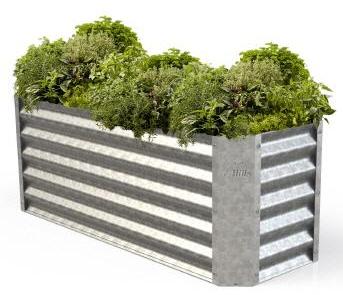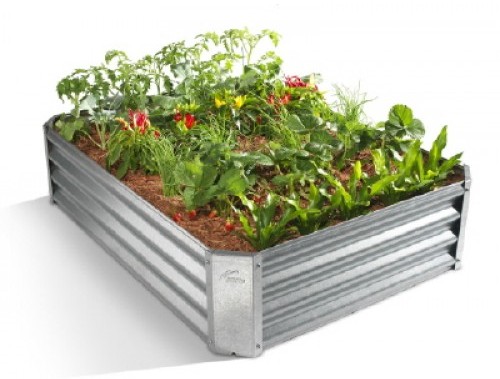March 9 - 15, 2014: Issue 153
Time To Plant Winter Vegetables – Raised Garden Beds
Now is the time to begin planting your winter vegetables so you may start harvesting these from June. Those that are on the planting list in March are - Beans - broad beans, fava beans, broccoli, cabbage, beetroot, carrots, lettuce leeks and herbs such as chives, oregano and dill.
If you have lots of possums and bandicoots in your yard, as we do, you may want to opt for a garden bed that is not as easily accessible as a ground level one may be so that it is you that wreaks the fruits of your labour and not the possums and bandicoots. The vegetables we’ve listed above all also have shallow roots so are particularly suited to raised garden beds.
Johnson Brothers Mitre 10 have for the whole of March placed the HILLS Garden Bed Adda 240 (120 x 45 x 45cm) Adda 320 (120 x 90 x 30cm) ideal for medium to large backyards, on their Specials for $65.00 each.
 The 240 is
great if you live in a unit and want something slimmer for a balcony and is
designed to fit down the side of a house and deep enough to grow a full range of
vegetables. – just remember to ensure you have placed an adequate draining dish
at its base to catch any water overspill. Both of these can be fitted with some
chcken wire over the top to prevent little nibblers munching your new fronds so
your vegetables and herbs can grow.
The 240 is
great if you live in a unit and want something slimmer for a balcony and is
designed to fit down the side of a house and deep enough to grow a full range of
vegetables. – just remember to ensure you have placed an adequate draining dish
at its base to catch any water overspill. Both of these can be fitted with some
chcken wire over the top to prevent little nibblers munching your new fronds so
your vegetables and herbs can grow.
The other important point is placement of your garden bed – full sun is best for winter growing winter vegetables. Also bear in mind that during winter you may not need to water these seedlings and plants as much as the ground is not evaporating as it did during Summer.
Preparing the garden bed
Raised garden beds are essentially containers – you need to replenish the soil in them regularly, like with any other garden bed. Autumn is the perfect time to use all that organic compost you have been collecting over summer.
To begin with, many people suggest you place a layer of pebbles or stones at the base of you raised garden bed so it has effective drainage - too much water sitting on your roots will cause them to rot. Fill almost to the brim with a well mixed compost and soil to which you have added nutrients - bearing in mind that the soil will settle with watering but leaving enough room for mulch as a protective layer.
 Setting out your bed
Setting out your bed
Many a gardener will point out that the way you set out a variety of vegetables within the one bed will enhance and protect the other plants in the veggie patch. The main rule is to arrange your crops so that shorter plants are not blocked from the sun by taller plants, so for example, if you’re going to plant spinach, keep this in a row near the centre of the bed, whereas your herbs such as oregano, can form a border that overspills the edges and plant lettuces between these and broccoli closest to the taller spinach. This will also make the bed look attractive – good enough to eat!
The other planting out rule to bear in mind is that it is important to know when your plants will mature. Those we have listed begin cropping in June and July and so the basic plant out guide we have provided should bring you a vegetableful crop - but lastly, plants such as your beans are planted against a trellis and this will block a lot of light, so locate trellises with this in mind.
Products and further friendly advice available at Mona Vale and Avalon Johnson Brothers Mitre 10.
|
|
Copyright JBH Mitre 10, 2013. All Rights Reserved .
